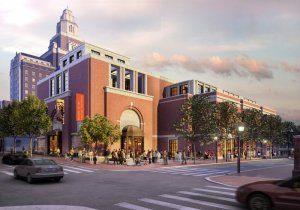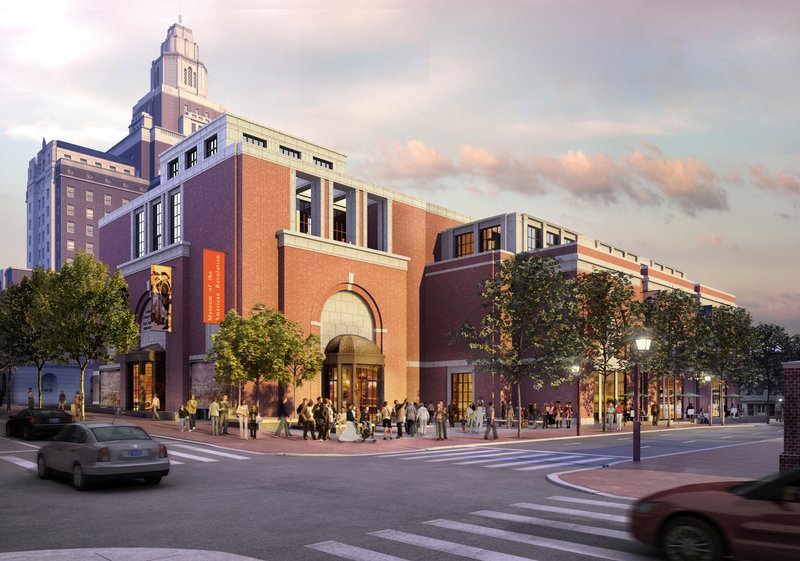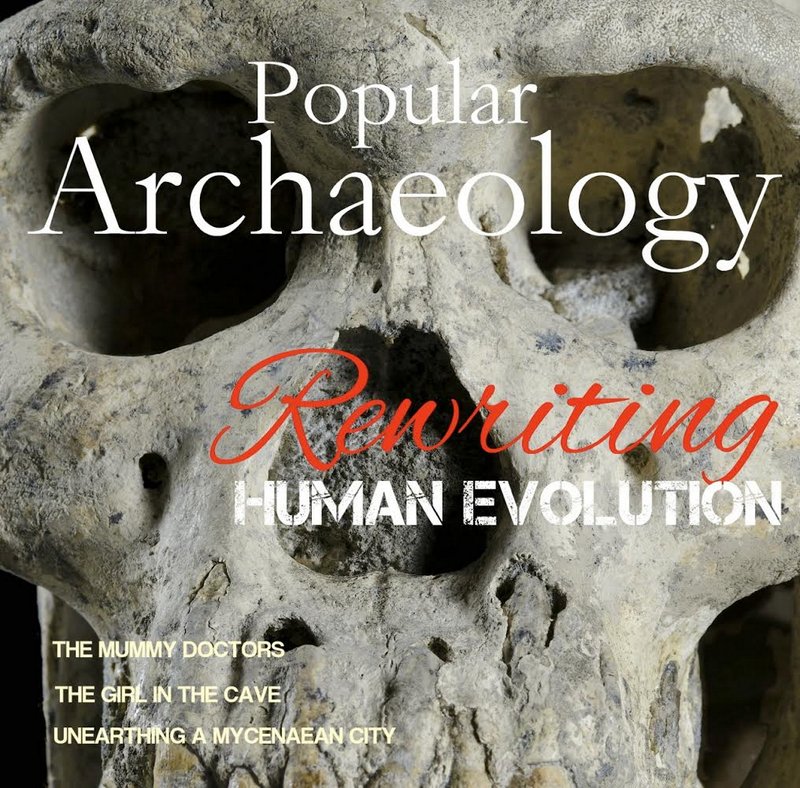
Slated for completion and opening in 2017, construction has already begun at the site of the planned Museum of the American Revolution in Philadelphia. But before work could begin, a team of archaeologists and other experts got busy systematically excavating and recording everything they could find beneath the surface where the museum will stand before construction work effectively wipes out what material history remains preserved below it.
Historic structural remains and tens of thousands of artifacts were uncovered before the task was finally finished on October 24th, 2014 until the Spring of 2015, when further archaeological work will begin in a different location beneath the site. In all, they excavated a well and twelve brick-lined privies yielding a motherlode of finds.
“One of the largest assemblages of artifacts came from an 18th-century privy in the southeast corner of the site,” wrote lead archaeologist Rebecca Yamin of John Milner Associates in her account of the excavations in the museum project’s Making the Museum blog.*
Among the assemblage finds was an intriguing English delftware punch bowl that featured an artfully rendered ship displaying British flags, including the words “Success to the Triphena” painted below the image. “We were the first people to lay eyes on the object since it was broken and discarded around the time of the American Revolution,” stated Yamin. It took a little historical research to uncover the significance of the find. “Thanks to the digitization of 18th-century American and British newspapers,” wrote Yamin, “we have been able to piece together some fascinating details about the original Triphena. The December 1, 1763 edition of the Pennsylvania Gazette carried an advertisement for merchant Robert Lewis and Son, located on Front Street in Philadelphia, where they offered an assortment of goods just imported on the “Triphena, Captain Smith, from Liverpool.” The Triphena played an important role in the American colonists’ opposition to the Stamp Act. In 1765, Captain Smith carried a memorial from the merchants of Philadelphia to the merchants of Great Britain, requesting that they influence Parliament to repeal the Act. “Like many of the items discovered on our site,” states Yamin in the blog, “the “Success to the Triphena” bowl is not simply an object—it is also a witness to and product of the rich and fascinating history of our corner of the world as a new nation was being formed.”*
_____________________________________________
 New architectural rendering of the Museum of the American Revolution as it will appear in Philadelphia. Courtesy Museum of the American Revolution
New architectural rendering of the Museum of the American Revolution as it will appear in Philadelphia. Courtesy Museum of the American Revolution
_____________________________________
Other 17th to 19th century finds included foundations of structures, numerous fragments of ceramic ware, buttons, pipe stems, lead shot, gun flints, shells, glassware, and even cattle horns and bones and the sole of a leather shoe, to name only a few examples. With these finds, the archaeologists and historians hope to be able to reconstruct a more detailed picture of life in this section of Philadelphia, known historically as Carter’s Alley, combining the archaeological finds and analysis with historical/documents research. “So far, from deeds we have learned that the block was occupied by many different kinds of artisans. For instance, in the 1790s there was a shoemaker, a bookbinder, a printer, a carpenter, a paper manufacturer, a blacksmith, a stay maker, a tallow chandler, a coachmaker, a cutler, and a cordwainer on Carter’s Alley,” states Yamin. “Once the artifacts are mended we will match them to their probable owners and address research questions that relate to domestic life in early Philadelphia and industrial activities that co-existed with private houses in this neighborhood. The site includes a material record of the development of the city in microcosm and we will trace the changes over time from the late 17th century up to the second decade of the 20th century.”*
The Museum of the American Revolution, with plans to open to the public in 2017, will tell the story of the American Revolution through artifacts, audio-visual presentations, and interactive exhibits, and will include accounts of colonial life and events during this critically pivotal period in U.S. history. More information about the museum and progress on its development can be obtained at the museum website. Information about the archaeology at the site can be found at the Making the Museum website blog.
__________________________________________________
*http://amrevmuseum.tumblr.com/
__________________________________________________
Just released!
The special new premium quality print edition of Popular Archaeology Magazine. A beautiful volume for the coffee table.
Travel and learn with Far Horizons.
____________________________________________
Read about the most fascinating discoveries with a premium subscription to Popular Archaeology Magazine. Find out what Popular Archaeology Magazine is all about. AND MORE:
On the go? Get the smartphone version of Popular Archaeology as an app or as an ebook.
Popular Archaeology’s annual Discovery Edition eBook is a selection of the best stories published in Popular Archaeology Magazine in past issues, with an emphasis on some of the most significant, groundbreaking, or fascinating discoveries in the fields of archaeology and paleoanthropology and related fields. At least some of the articles have been updated or revised specifically for the Discovery edition. We can confidently say that there is no other single issue of an archaeology-related magazine, paper print or online, that contains as much major feature article content as this one. The latest issue, volume 2, has just been released. Go to the Discovery edition page for more information.









